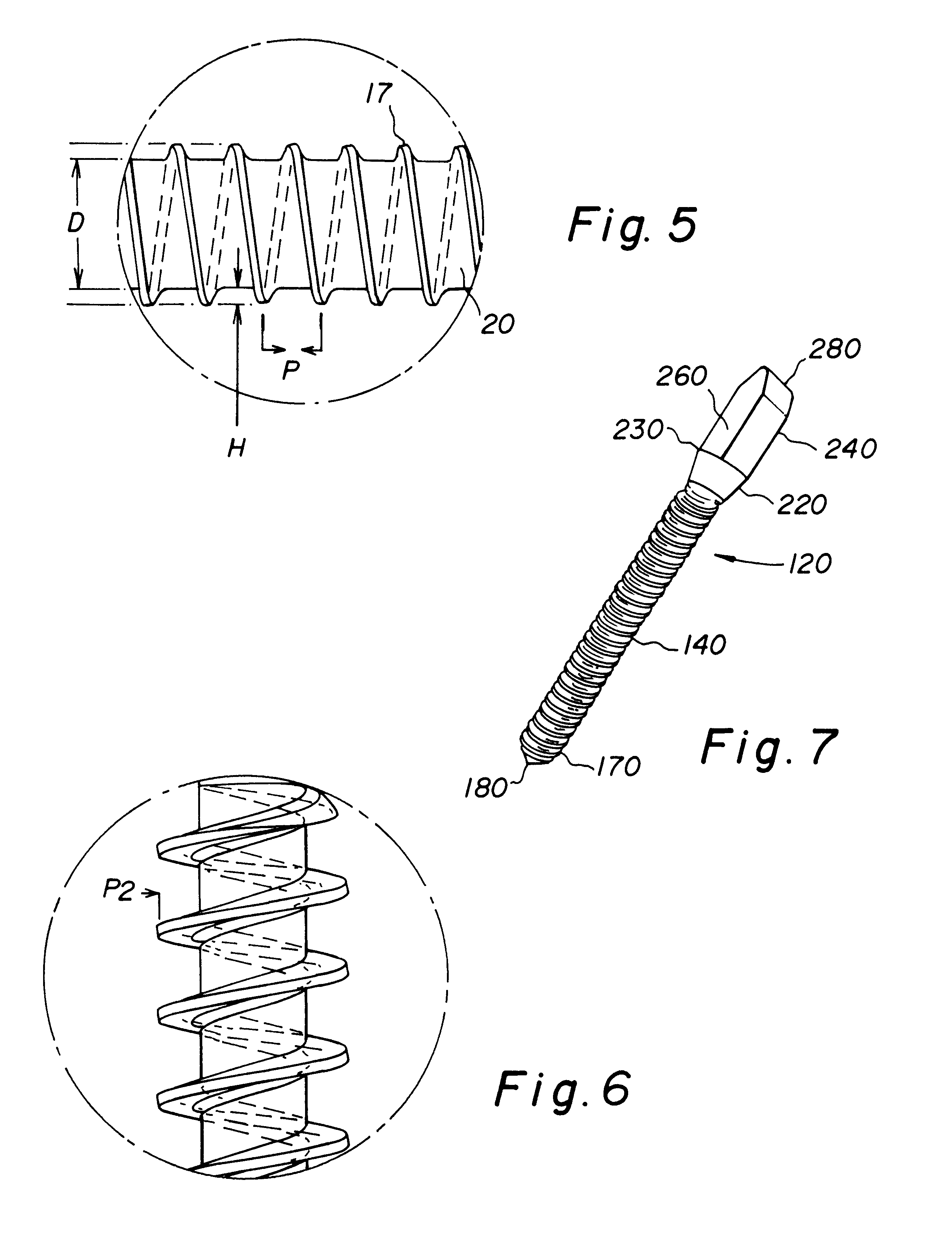Allograft bone fixation screw
a technology of screw and socket, which is applied in the field of threaded devices, can solve the problems of premature failure of the screw during intraoperative insertion, compromise the functionality of the fixation, and material failure to meet the expected performance,
- Summary
- Abstract
- Description
- Claims
- Application Information
AI Technical Summary
Benefits of technology
Problems solved by technology
Method used
Image
Examples
Embodiment Construction
The preferred embodiment and the best mode of the present invention is shown in FIGS. 1 through 5.
It is an accepted fact that the initiation of mechanical failure in a material occurs at the outer surface of the material. Also, it is recognized that rapid changes in cross sectional geometry act as localized "stress risers", significantly increasing the risk of failure under load. The present inventive bone screw 12 solves these problems particularly when the screw is constructed of allograft bone. The preferred material of the bone screw is cortical allograft bone.
The bone fixation screw 12 has a shark 14 with a threaded portion 16 ending in a distal tip 18 and an unthreaded portion 20 which has a section 22 is tapered outward to form a frustrum conical configuration with a flat end portion 23 from which a drive head 24 extends. The flat end portion preferably has a 4.0 mm or -0.1 mm diameter with the sides of the drive head ranging from 3.0 mm to 4.0 mm in width. The drive head 24 ...
PUM
 Login to View More
Login to View More Abstract
Description
Claims
Application Information
 Login to View More
Login to View More - R&D
- Intellectual Property
- Life Sciences
- Materials
- Tech Scout
- Unparalleled Data Quality
- Higher Quality Content
- 60% Fewer Hallucinations
Browse by: Latest US Patents, China's latest patents, Technical Efficacy Thesaurus, Application Domain, Technology Topic, Popular Technical Reports.
© 2025 PatSnap. All rights reserved.Legal|Privacy policy|Modern Slavery Act Transparency Statement|Sitemap|About US| Contact US: help@patsnap.com



